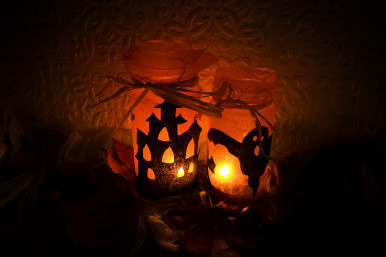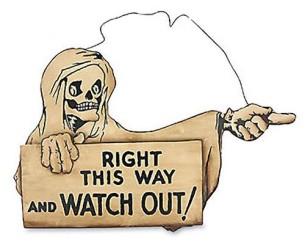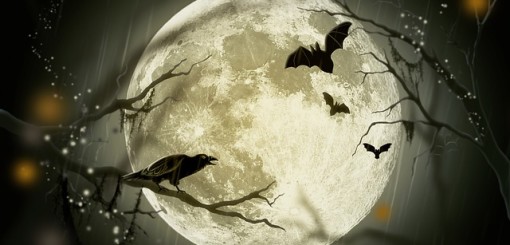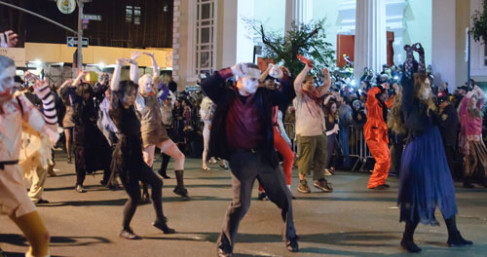Halloween night is full of fun frights, but you absolutely do not want any scares where your child’s safety is concerned. Halloween night sees twice as many accidents involving pedestrians and vehicles than any other night of the year.
So, we have created this list of questions to ask yourself and your child to ensure you talk about safety before you head out for an fun evening of tricks and treats.
Unfortunately, only one out of three parents have a talk with their kids about being safe during Halloween, despite being concerned about their child’s safety.
Whether your child will be accompanied by an adult or they will be joining their friends to trick or treat, we want you and your family to have a fun-filled and safe Halloween.
Can your Child See Properly?
Masks are a major safety concern for both children and adults as they greatly restrict the ability to see everything around you, and full coverage masks also restrict how much you can hear. This makes it difficult to see obstacles and uneven walking surfaces in front of you – not to mention surrounding traffic and roadways.
Instead of using masks in costumes, consider using face paint or makeup to complete yours or your child’s costume.
Flashlights are also important to bring during your Halloween walk, especially if there are areas that are not well lit, as they make it easier to see on darkened pathways.
Can They be Seen by Others?
Wearing dark colours at night while walking near traffic and roadways is an obvious danger that many overlook.

The best way to ensure that you and your family can be seen while walking around on Halloween night is to choose brightly coloured costumes and trick or treating bags, as well as using reflective tape. Reflective tape can be bought from most hardware stores for around $5 a roll and can make all the difference in making your family as visible as possible.
Putting a strip along your shoulders on your back and across your hips, chest, or down your legs, will ensure that you can be seen both coming and going.
Glow sticks and flashlights are another great way to make your family seen at night, and the variations in types of glow sticks and glow jewelry can make them a fun thing to wear.
Can they Walk Properly?
 Some costumes may include specific footwear such as heeled shoes or shoe coverings, however these can not only make walking difficult, and can even be dangerous if they cause you or your children to trip and fall.
Some costumes may include specific footwear such as heeled shoes or shoe coverings, however these can not only make walking difficult, and can even be dangerous if they cause you or your children to trip and fall.
Instead, choose sensible footwear that fits well and is comfortable. You want to prevent falls and to make sure everyone’s feet are comfortable enough to last the entire evening.
Another thing that can make walking difficult is oversized or ill fitting costumes. Extra fabric or loose pieces of a costume are a hazard that can easily be remedied by choosing properly fitting costumes and altering loose or hanging pieces so they are less of a concern.
Do They Have a Walking Buddy?
 The general consensus is that children 12 years of age and younger should always be accompanied by an adult when out on Halloween night. Those who are older and choose not to be accompanied by an adult should have at least one walking budding with whom they go out on Halloween night and stick with for the entire evening.
The general consensus is that children 12 years of age and younger should always be accompanied by an adult when out on Halloween night. Those who are older and choose not to be accompanied by an adult should have at least one walking budding with whom they go out on Halloween night and stick with for the entire evening.
Safety comes in groups since the little goblins and witches are easier to see, and less likely to be overlooked, compared to a single person. In general, groups of three to six are ideal.
Are They Going to Dark Houses?
Whether your child is accompanied by an adult or not, be sure that they know only to approach houses that are well lit. Houses that are not well lit are generally not only choosing to forgo Halloween celebrations, but can also be safety threats as it can be difficult to see potential hazards such as debris, slippery surfaces, or animals who may not be so friendly.
Do They Know the Route?
If your child is going out on Halloween without an adult, you’ll want to have a conversation with them about the route they plan on walking. Planning out where they are going ensures that they don’t get lost and that you know the areas they will be.
Be sure that you discuss how to cross streets, and that they know to use pedestrian crosswalks (“look both ways!”), making sure that the drivers are stopped before trying to cross.
Can They Get in Contact With You?
Regardless of whether children are going out on Halloween with another adult or with their friends, be sure that they know how to get in contact with you, and will do so, should they change their walking route.
This does not necessarily mean that your child needs a cellphone of their own, but in the event that they don’t it might be advisable to borrow one or trick or treat with someone who does..
Will They be Snacking?
Talk to your children about only eating candy that is properly sealed and only doing so once they return home, under your supervision.
There are two main reasons for this: the first is that if your child has any allergies you can monitor what exactly they are eating, and the second is that you can check for any hazards or breakages in packaging that can pose a potential threat to your child which may otherwise go unnoticed.
We hope that this has helped with your Halloween preparedness, and that you and your little ones are set to have the best night out possible. Have fun!







